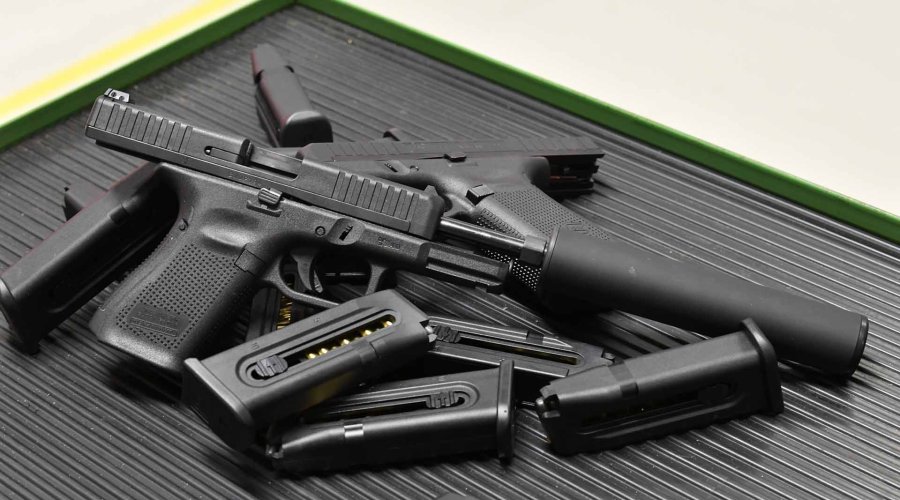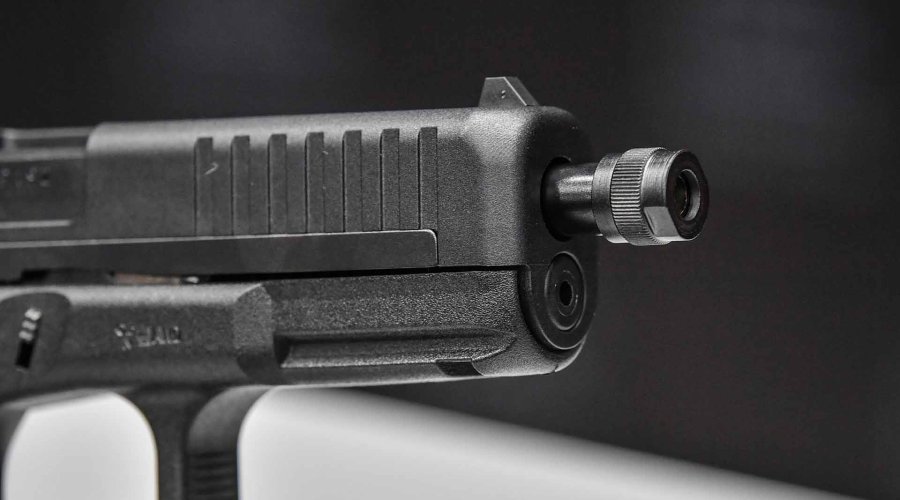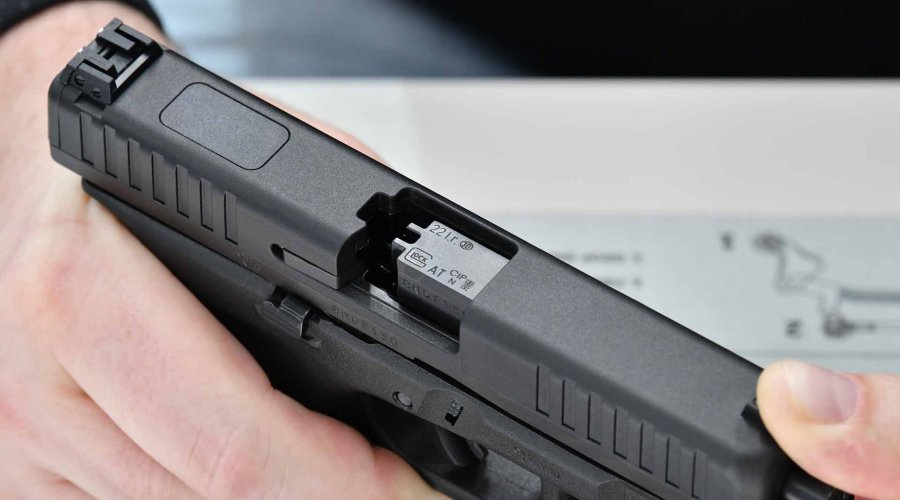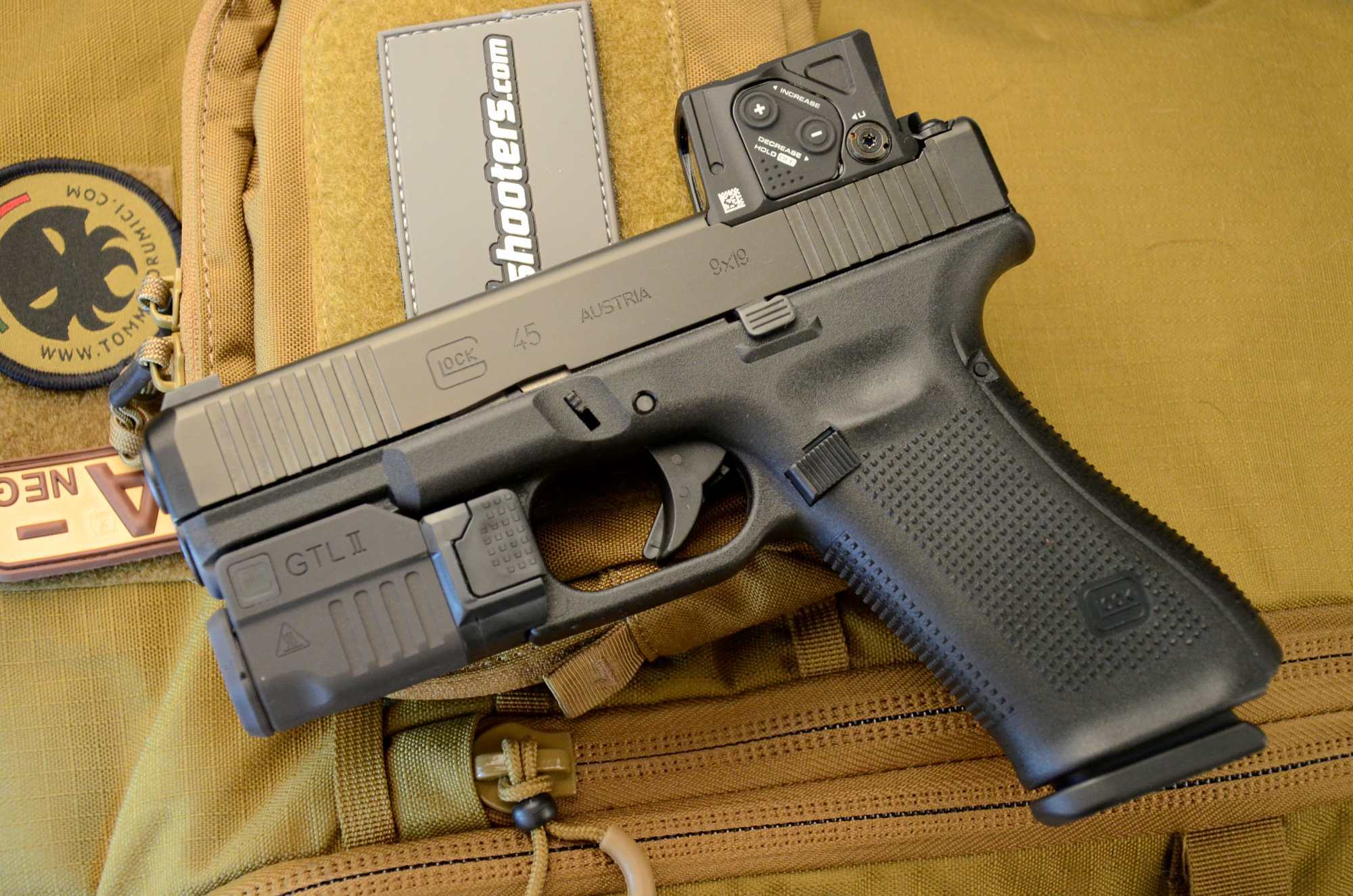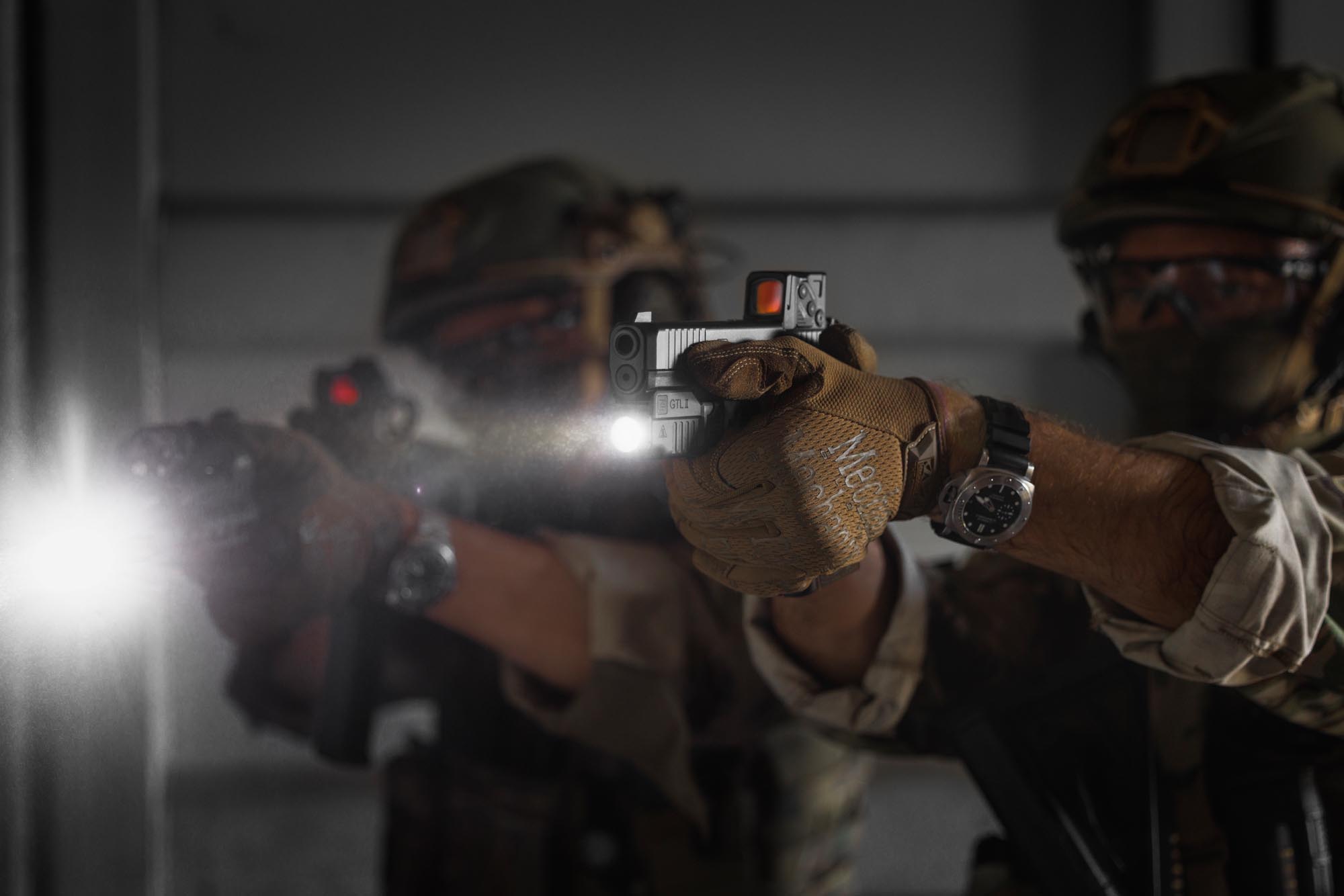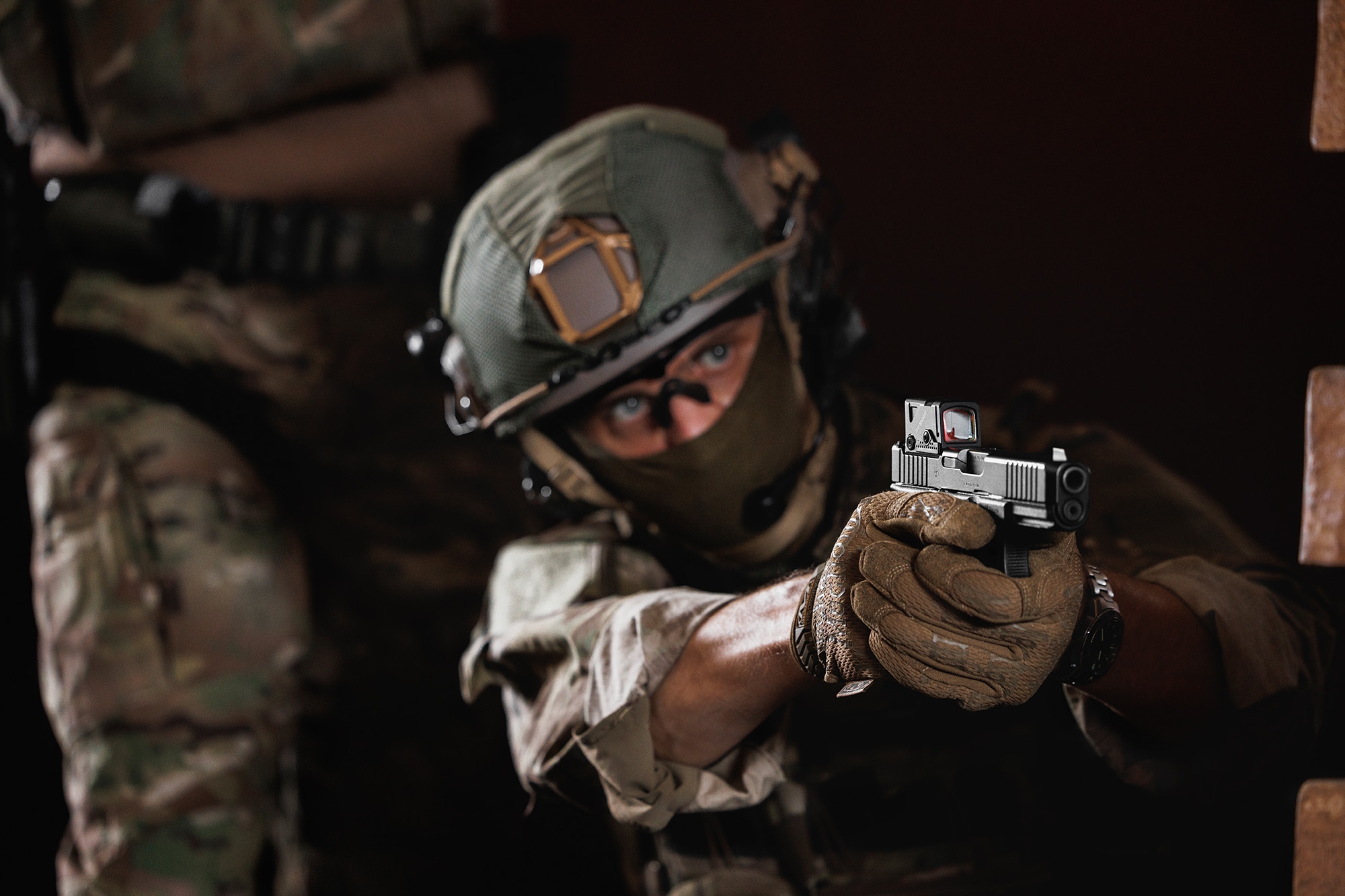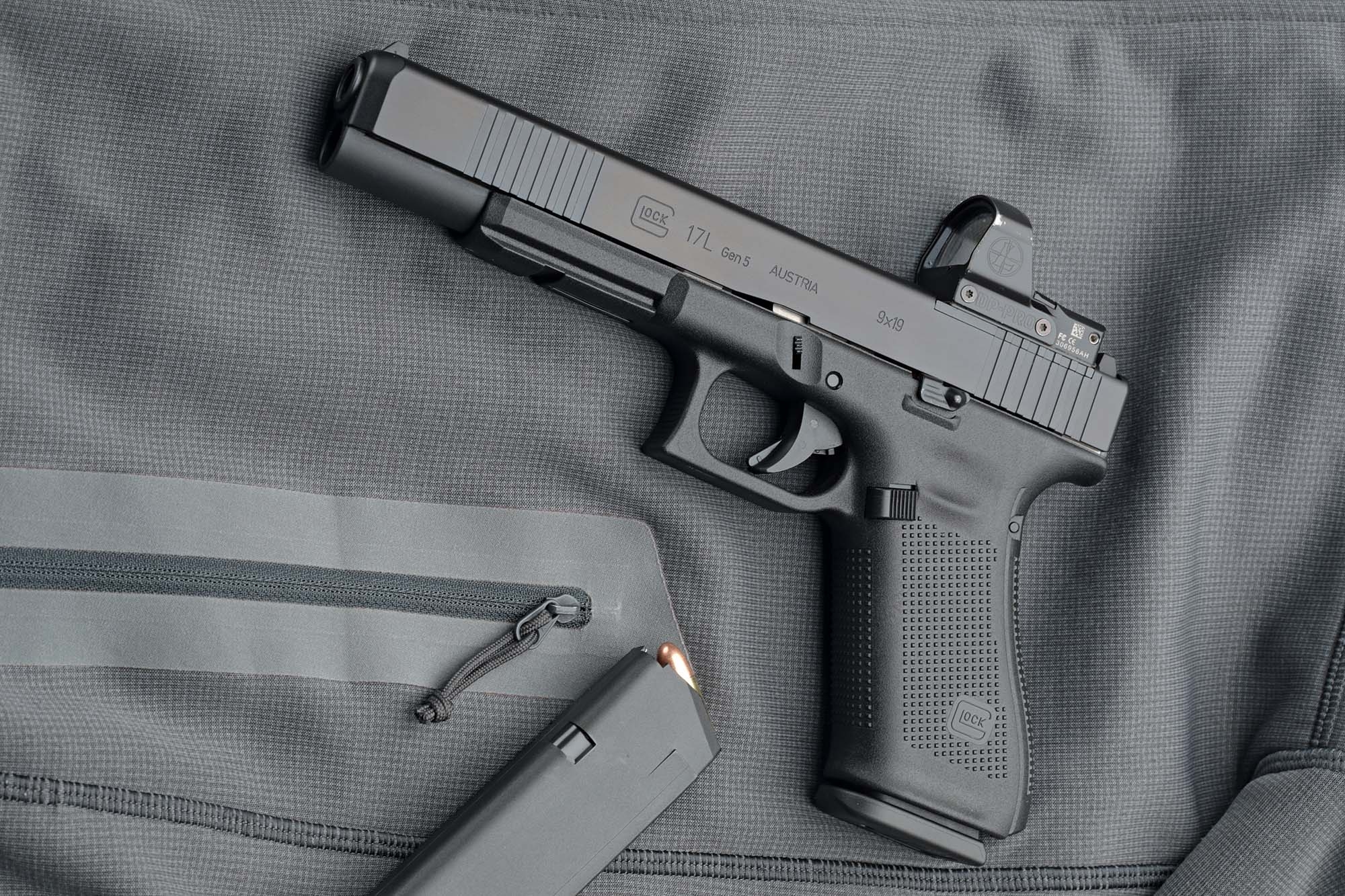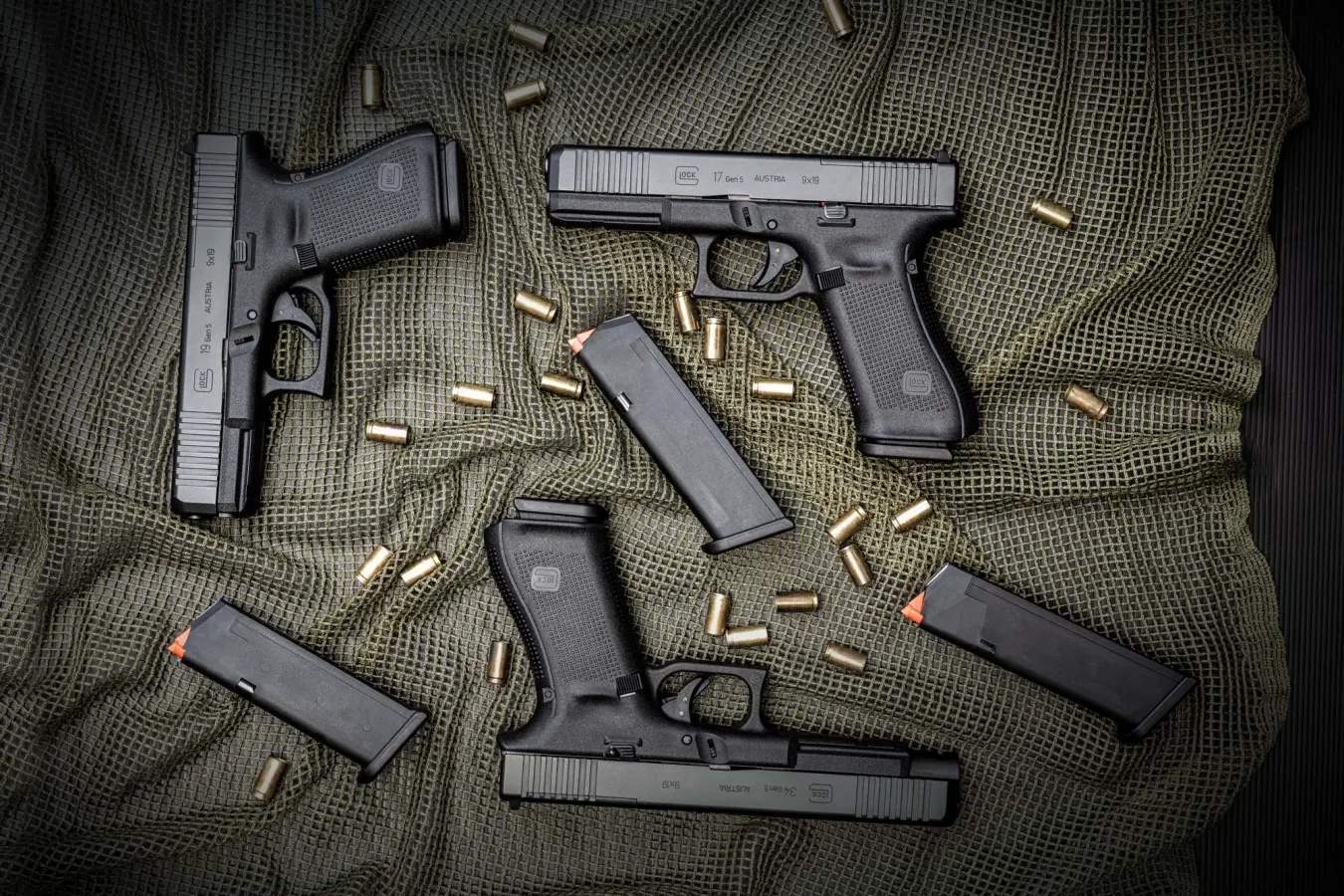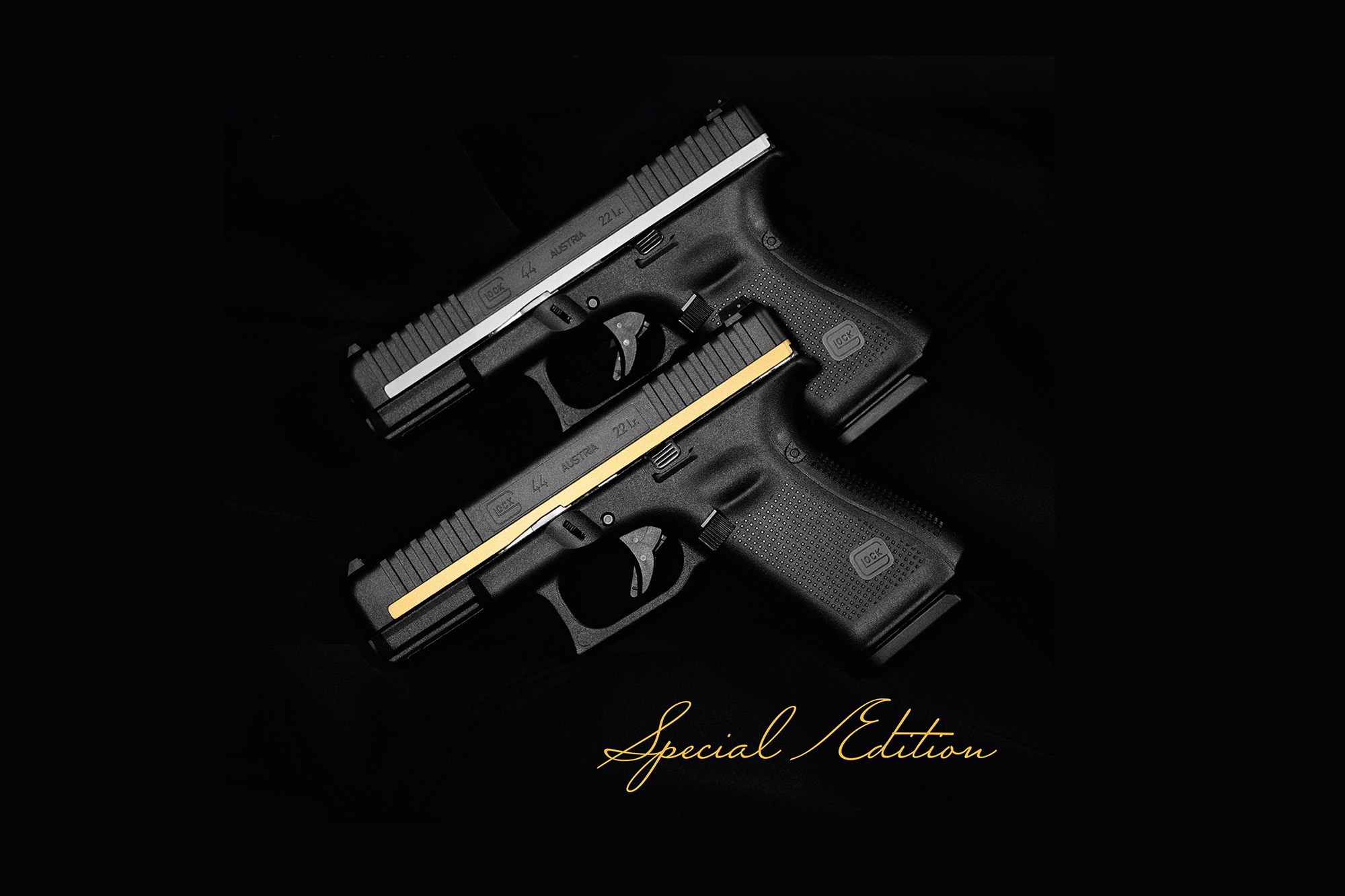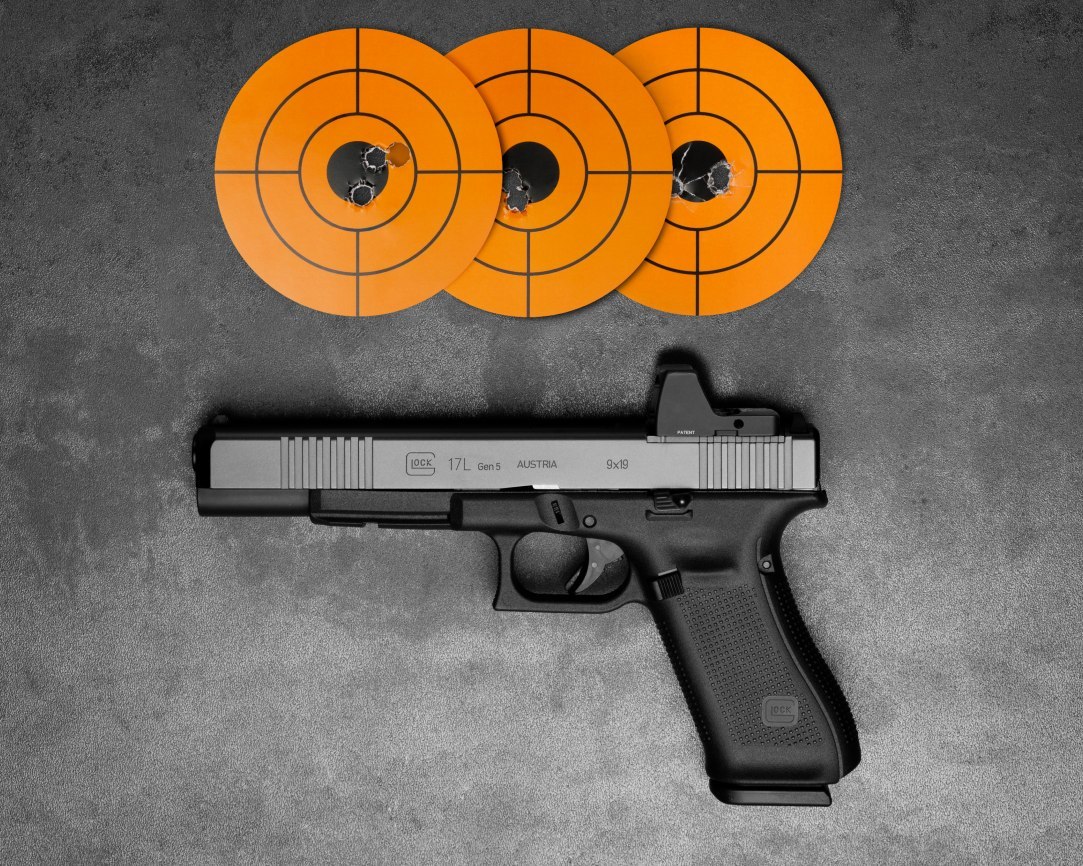We have already introduced the protagonist of this article in the form of the G44
on the day of the world premiere
(December 10, 2019): the GLOCK rimfire pistol with a magazine capacity of 10 cartridges and many fifth-generation features replicates the size of the well-known G19 9mm compact pistol. The rimfire pistol is
based on a blowback operating system
with a non-tilting "floating" barrel - it is not fixed on the frame at all times. The
GLOCK Marksman Barrel (GMB),
a typical feature of the Gen 5, features the same 4.02” / 102 mm barrel length as the GLOCK 19 in the basic version. But how does it perform?
GLOCK 44: two versions – with and without suppressor thread
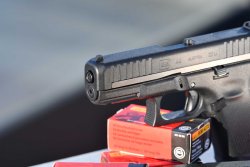
The G44 replicates the appearance, functionality and handling of the popular G19 compact pistol in 9 mm Luger centerfire caliber. The new rimfire model is therefore the ideal tool for more economical training as well as for teaching teens and beginners the basics of pistol shooting.
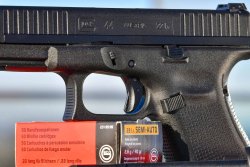
The GLOCK G44 is available in two models: one with a 4.02” / 102-mm long barrel standard crowned muzzle, which is flush with the slide, and optionally with a longer threaded barrel with M9 x 0.75 mm muzzle thread, which protrudes from the business end of the slide, for sound suppressor use. Particularly interesting is the lightweight composite hybrid slide with steel guide rails and polymer body, built to ensure maximum reliability with the immense variety of loadings of the low-recoil .22 Long Rifle ammunition.

GLOCK engineers told us on-site that the single-stack magazine with a capacity of 10 rimfire cartridges is a necessity to avoid functional problems. 10 rounds is the maximum that a single stack of rounds can be contained in the magazine length of a 19 sized grip. GLOCK is known for 100% functional reliability and no risk or compromise is taken.
With a longer G17/G19X grip, the magazine capacity could of course also increase, so that we can perhaps already expect additional .22 LR chambered models in the future (?).
Operation, trigger and functional safety of the GLOCK 44
The magazine with the double loading assist buttons on the sides is very easy to load. With the two buttons you pull down the follower and load cartridge by cartridge into the magazine. The chamber is fluted (as in HK's roller-delayed guns) , eliminating friction between barrel chamber walls and ammunition case for increased reliability. The GLOCK Marksman Barrel (GMB) barrel also features a ghost hole to check if a live round is chambered.
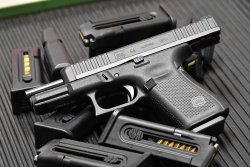
The firing pin assembly is optimized for rimfire, and the gun uses the same trigger components of centerfire GLOCKs. This makes the overall trigger characteristics of the G44 the same as those of the larger caliber models, which is very positive for training. The G44 can also be safely dry-fired without any damage, as can happen with classic rimfire guns.
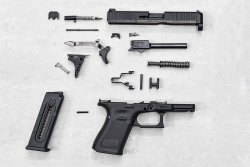
The new GLOCK rimfire pistol event counts the same number of parts as the large caliber models, especially since the slide with steel rails and polymer body cannot be disassembled.
Nevertheless,
the G44 is very light,
at only 12.63 oz / 358 grams when empty and 16.40 oz / 465 grams with a full magazine. A GLOCK 19, on the other hand, weighs 595 grams unloaded. That's a full 8.36 oz / 237 grams – or almost 40 percent – less!
The GLOCK 44 on the shooting range – our first impressions
At the world premiere of GLOCK's first rimfire pistol, we had the opportunity to be there live with our colleagues Franco Palamaro and Tino Schmidt and were able to test-fire the new model. So we could judge by ourselves, but we also had the opportunity to talk with international colleagues and US Glock team member Michelle Viscusi to see how much she enjoyed training with the new GLOCK 44.
In our
Facebook video
you can see that the rimfire pistol has very little recoil even when firing quick strings of shots:
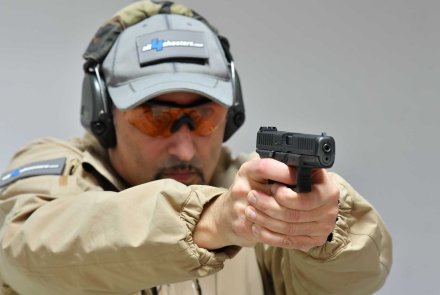
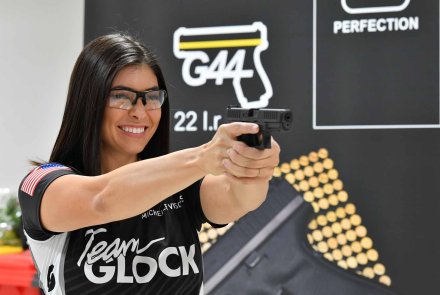
Here is our personal first impression: the new, lightweight G44 gave us the usual good handling feeling of a G19, whereby recoil and muzzle flip are significantly reduced. Recoil, in particular, felt quite peculiar: the grooved cartridge chamber mentioned above allows for a greater slide acceleration with consequent greater recoil, even if the feedback is extremely pleasant. Thanks to a low barrel axis – the lowest in the history of all GLOCK-manufactured pistols – muzzle climb is extremely limited, which allows for immediate sight recovery and target acquisition. Cycling was perfect with around a dozen different .22 LR ammunition types. The GLOCK 44 ran flawlessly with both standard and faster High Velocity (HV) cartridges. Accuracy achieved with the rimfire version right from the start was also very impressive. Of course, more in-depth and extensive tests will provide us with more information when we receive test guns. We expect to receive the first samples by mid/end of January 2020. It goes without saying that we will bring full test results online here on all4shooters.com as soon as possible.
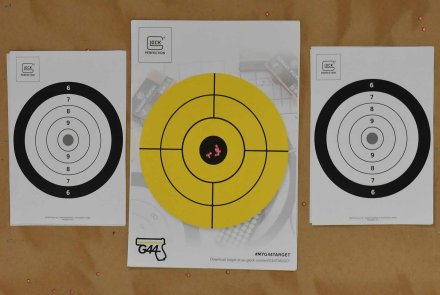
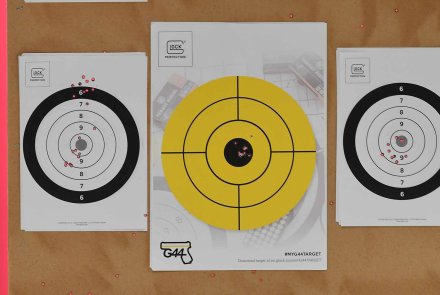
Future prospects: what will become of all GLOCK conversion kits?
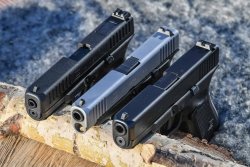
Third party suppliers of .22LR chambered GLOCK-style leisure guns as well as rimfire slide conversion kits for GLOCK centerfire pistols / frames will probably have a much harder time launching their products on the market in the future with the release of the GLOCK G44. The G44 is a very mature complete gun built by the original manufacturer and it's absolutely effective in terms of both functional reliability and firing performance.
In our opinion, the G44 will take the US market by storm. The GLOCK G44 will be available worldwide starting from January 20, 2020, at a price of 604 euro for the standard version and 700 euro for the threaded barrel version (price may vary in your country due to VAT and import duties).
Further information on the GLOCK 44 can be found on the
GLOCK website
.
You can read our live report of the GLOCK 44 presentation here.



